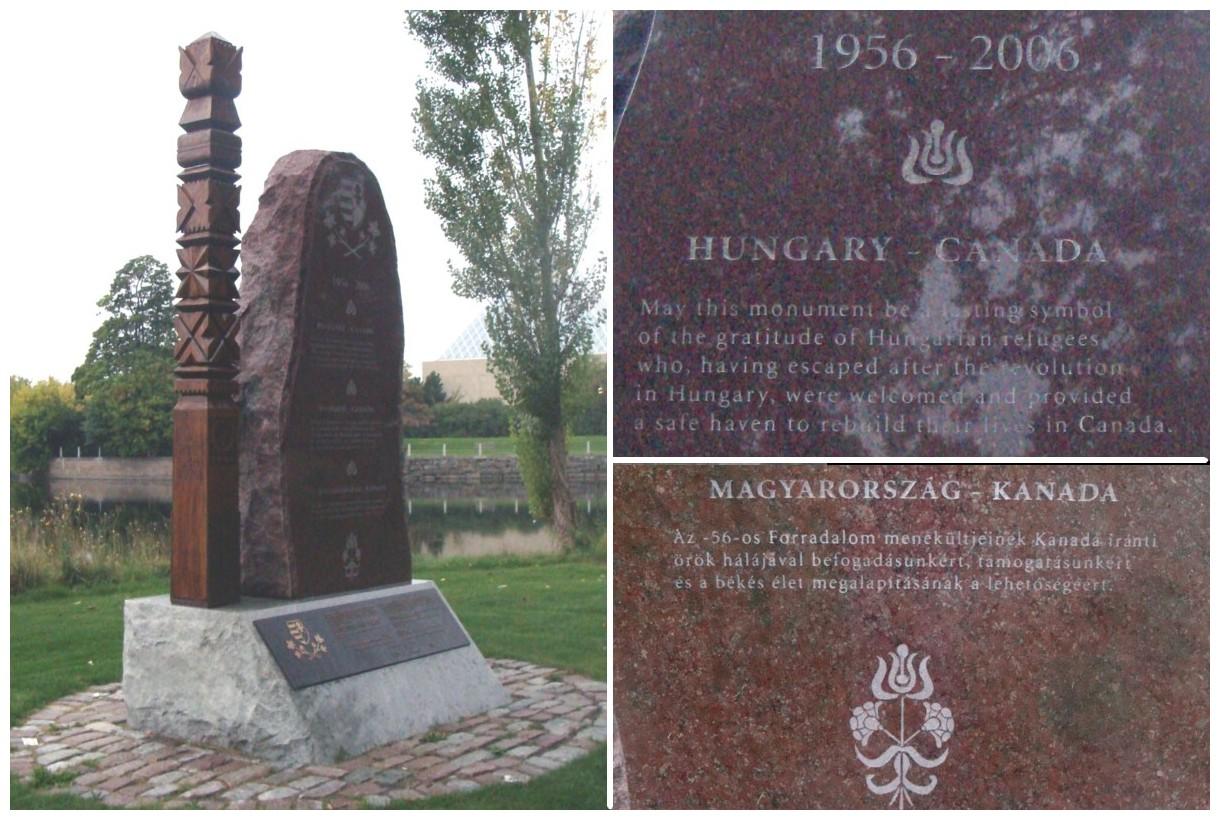 |
OTTAWA, Hungarian Monument (2008-09-27) |  |

Click on the picture to see it in full size.
Notes:
 |
OTTAWA, Hungarian Monument (2008-09-27) |  |

Notes:
In 1956, thousands of Hungarians fled reprisals and oppression from the Soviets in their native Hungary. Canada responded with significant humanitarian aid and measures that permitted the rapid resettlement of almost 40,000 Hungarian refugees to Canada, within months of the revolution. Fifty years later, a monument was raised to commemorate Canada’s response to this desperate situation.
The project was sponsored by the 1956 Hungarian Monument Committee with support from the Hungarian Canadian community, the Republic of Hungary, the Canada-Hungary Educational Foundation and Canadian friends.
The commemoration consists of an irregularly shaped 2.5 m high Canadian Shield red granite monument set on a gray granite base, together with a 3 m high, wood sculpture called a “kopjafa,” which is a popular and traditional Hungarian art form. The wooden Hungarian kopjafa represents nobility, honour, peace, friendship and gratitude, while the granite represents the strength of Canada.
The monument inscription reads:
“May this monument be a lasting symbol of the gratitude of Hungarian refugees who, having escaped after the revolution in Hungary, were welcomed and provided a safe haven to rebuild their lives in Canada.”
On October 4, 2006, the monument was unveiled by His Excellency Dénes Tomaj, Ambassador of the Republic of Hungary to Canada, and Mr. Marcel Beaudry, Chairman of the National Capital Commission.
Fabrication Date: 2006
Owner: National Capital Commission
Location: The monument is located on Maple Island near Sussex Drive, Ottawa.
Directions: Facing Parliament Hill, turn right on Wellington Street. Follow Wellington Street to Sussex Drive and turn left. Continue on Sussex Drive past King Edward Avenue. The monument is located to the right, on Maple Island.
From a web page at http://www.canadascapital.gc.ca/
Hungarian translation of talpazaton angolul és franciául olvasható szöveg::
1956-ban sok ezer magyar menekült el a szülôföldjérôl, hogy elkerülje az elnyomást és a büntetést. Kanada jelentôs emberséges segítséggel reagált, és a forradalom utáni hónapokban lehetôvé tette a bevándorlást közel 40 ezer menekültnek Ötven év után, Kanadának ebben a válságos helyzetben tanúsított reakciójára emlékeztet ez az emlékmű.
A magyar "kopjafa" méltóságot, tiszteletet, békét és barátságot jelképez. A kanadai gránit pedig Kanada erejét jelképezi.
Felállította a kanadai-magyar közösség, a Magyar Köztársaság és a kanadai barátok
Dedikálta Tomaj Dénes Magyarország kanadai nagykövete és Mr. Marcel Beudry a Nemzeti Fôváros Bizottság (NCC) elnöke
2006 okt. 4.- én.